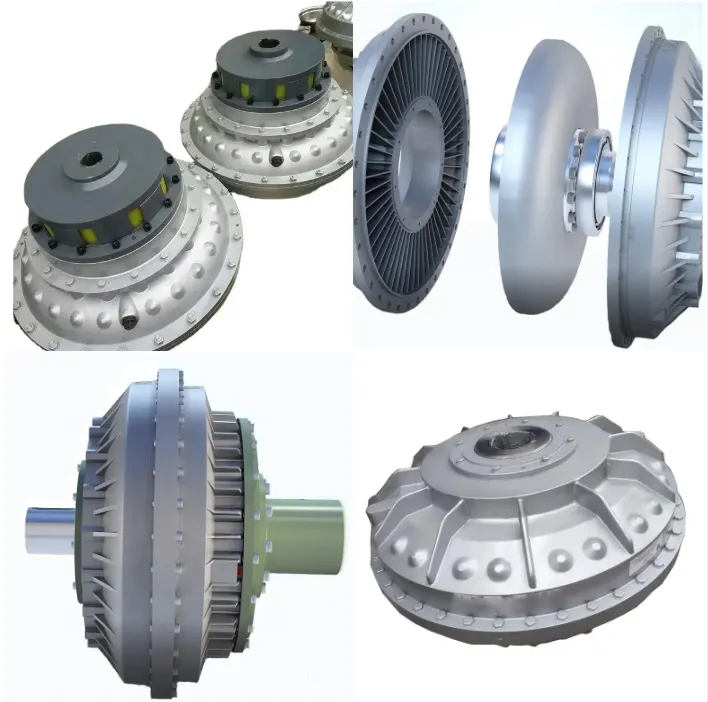Flat Face Coupler Repair
Understanding Flat Face Couplers
Flat face couplers, also known as flush face couplers, are specialized hydraulic connectors designed to minimize fluid loss and prevent contamination during disconnection. They are vital in maintaining the efficiency and safety of hydraulic systems.
Common Issues with Flat Face Couplers
Despite their robust design, flat face couplers can experience wear and tear, leading to issues such as leakage, difficulty in connecting or disconnecting, and contamination. Understanding these problems is key to effective maintenance and repair.
Importance of Regular Maintenance
Regular maintenance of flat face couplers ensures the longevity and performance of your hydraulic systems. Scheduled inspections can help identify wear patterns and prevent unexpected failures.
Tools Required for Repair
To repair a flat face coupler, you will need specific tools including wrenches, seal kits, and cleaning agents. Having these tools at hand facilitates a smooth and efficient repair process.
Step-by-Step Repair Guide
Repairing a flat face coupler involves several steps. First, disconnect the coupler from the hydraulic system. Then, clean the surfaces thoroughly to remove any contaminants. Next, inspect the seals and replace any damaged ones. Finally, reassemble the coupler and test for leaks.
Replacing Seals and O-rings
Seals and O-rings are critical components of flat face couplers. Over time, they can degrade due to exposure to high pressures and temperatures. Replacing these parts is essential to maintain the integrity of the coupler.
Testing for Leaks After Repair
After completing repairs, it’s crucial to test the coupler for leaks. This can be done by reconnecting the coupler to the hydraulic system and checking for any signs of leakage under operating conditions.
Preventive Measures to Avoid Future Issues
Implementing preventive measures such as using protective caps when the coupler is not in use, and avoiding contamination during connection and disconnection, can significantly extend the life of your couplers.
Choosing High-Quality Replacement Parts
Using high-quality replacement parts is essential for the effective repair of flat face couplers. Ensure that the parts are compatible with your specific coupler model to avoid performance issues.
Professional Repair Services
If you are not confident in performing the repairs yourself, consider hiring professional repair services. Technicians with specialized knowledge can efficiently diagnose and fix issues with your flat face couplers.
Cost Considerations for Repair
The cost of repairing a flat face coupler can vary depending on the extent of the damage and the availability of replacement parts. Investing in quality parts and timely maintenance can reduce overall repair costs.
The Role of Manufacturer Support
Manufacturers often provide support for their products, including repair guides and troubleshooting assistance. Leveraging this support can be invaluable in maintaining your flat face couplers.
Upgrading to Advanced Couplers
In some cases, upgrading to more advanced flat face couplers with improved designs and materials can be a cost-effective solution. Modern couplers often offer better performance and longer lifespans.
Environmental Considerations
Flat face coupler repairs should also take into account environmental factors. Proper disposal of old seals and contaminated fluids, as well as the use of eco-friendly cleaning agents, are important for sustainable maintenance practices.
Conclusion
Maintaining and repairing flat face couplers is essential for the optimal performance of hydraulic systems. By following best practices and using quality parts, you can ensure the longevity and reliability of your couplers.

What is the function of hydraulic coupler?
Torque Transmission: Hydraulic couplers provide a means to transmit torque between the driving and driven components in a hydraulic system.
Shock Absorption: They help in absorbing shock loads, thereby protecting the system from damage due to sudden impacts or load variations.
Misalignment Compensation: Hydraulic couplers can accommodate minor misalignments between connected components, ensuring smooth operation.
Fluid Transfer: They facilitate the transfer of hydraulic fluid under pressure, ensuring efficient energy transfer within the system.

What are the two types of fluid coupling?
Fixed Fill Fluid Coupling: This type has a predetermined amount of fluid, resulting in a fixed amount of power transmission. It is simple and cost-effective but limited in its ability to handle variable loads.
Variable Fill Fluid Coupling: This type allows for the adjustment of fluid levels, providing greater control over power transmission. It is suitable for applications requiring variable loads and improved efficiency.

How do hydraulic quick couplers work?
Connection: Hydraulic quick couplers connect by aligning the male and female parts and pushing them together. An internal locking mechanism secures the connection.
Disconnection: To disconnect, the user pulls back a sleeve or collar, releasing the internal locking mechanism and allowing the couplers to separate.
Sealing: Quick couplers feature internal seals that prevent fluid leakage during connection and disconnection, ensuring a clean and efficient process.
Pressure Handling: They are designed to handle high pressures, making them suitable for various hydraulic applications.
Choosing or Customizing the Right Hydraulic Coupling

Pressure Rating: Ensure that the coupling can handle the maximum operating pressure of your system to prevent failures.
Flow Rate: Select a coupling that can accommodate the required flow rate to maintain system efficiency.
Material Compatibility: Choose materials that are compatible with the hydraulic fluid and operating environment to prevent corrosion and degradation.
Size and Dimensions: Ensure the coupling fits within the spatial constraints of your system and matches the connection sizes.
Environmental Conditions: Consider factors such as temperature, humidity, and exposure to chemicals when selecting materials and designs.
HZPT³ÉÁ¢ÓÚ2006Ä꣬ÊÇÒ»¼ÒרҵÑз¢ºÍÉú²ú¸ß¾«¶ÈÁªÖáÆ÷¡¢¹öÖéË¿¸ÜÖ§³Åµ¥Ôª¡¢µç»úÖ§¼ÜºÍÔ˶¯Ä£¿éµÄÖÆÔìÉÌ¡£ÎÒÃǵÄÁªÖáÆ÷²úÆ·Ïß°üÀ¨ËÅ·þµç»úÁªÖáÆ÷¡¢²½½øµç»úÁªÖáÆ÷¡¢Î¢Ð͵ç»úÁªÖáÆ÷¡¢±àÂëÆ÷ÁªÖáÆ÷µÈ¡£
ÓÅÊÆ£º
- ¼¼ÊõÏȽø – ÎÒÃÇÓµÓÐÁìÏȵÄÑз¢ÖÐÐÄ£¬È·±£Ã¿Ò»¸ö²úÆ·¶¼·ûºÏ×îеļ¼Êõ±ê×¼¡£
- ×ÔÓÐÑз¢ÖÐÐÄ – ÎÒÃÇÄÚ²¿µÄÑз¢ÍŶӲ»¶Ï´´Ð£¬ÒÔÂú×ãÊг¡ÐèÇó¡£
- ×ÔÓмӹ¤ºÍ²âÊÔϵͳ – ÿһ¸ö²úÆ·¶¼¾¹ýÑϸñµÄ²âÊÔºÍÖÊÁ¿¿ØÖÆ£¬ÒÔÈ·±£Æä¿É¿¿ÐÔºÍÐÔÄÜ¡£
- ISO 9001:2015ÈÏÖ¤ – ÎÒÃǵÄÉú²ú¹ý³Ì·ûºÏ¹ú¼ÊÖÊÁ¿¹ÜÀí±ê×¼£¬±£Ö¤Á˲úÆ·µÄ׿ԽƷÖÊ¡£
- ¹ã·ºµÄÐÐÒµÈÏ¿É – ÎÒÃǵIJúÆ·±»È«Çò¶¥¼¶¿Í»§¹ã·ºÊ¹ÓúÍÈÏ¿É£¬º¸Çµç×Ó¡¢Ì«ÑôÄÜ¡¢¹â·ü¡¢»ú´²µÈ¶à¸öÐÐÒµ¡£
Ä¿Ç°£¬ÎÒÃÇÓµÓÐ30¶àÌõ²úÆ·Ïߣ¬¹ã·ºÓ¦ÓÃÓÚµç×Ó¡¢Ì«ÑôÄÜ¡¢¹â·ü²úÒµ¡¢»ú´²¡¢°ü×°¡¢Ä£¾ß¡¢Ò½ÁÆ¡¢Ó¡Ë¢µÈÐÐÒµµÄ¸ß¾«¶ÈÁ¬½ÓºÍ¸÷ÖÖ×Ô¶¯»¯»úÆ÷É豸¡£²úÆ·ÒÑ»ñµÃÈÕ±¾¡¢ÃÀ¹ú¡¢µÂ¹ú¡¢ÒÔÉ«ÁС¢ÂíÀ´Î÷ÑÇ¡¢Ð¼ÓÆ¡¢Öйų́ÍåµÈÈ«Çò¶¥¼¶¿Í»§µÄÈϿɺ͹㷺ʹÓá£
ÎÒÃǹ«Ë¾×¨ÒµÉú²úÏúÊÛhydraulic coupling¡£ÎÒÃǵIJúÆ·²ÉÓÃ×îÏȽøµÄ¼¼ÊõºÍ²ÄÁÏ£¬È·±£¸ßЧµÄҺѹ´«¶¯ÐÔÄÜ¡£ÎÞÂÛÄúÔÚÄĸöÐÐÒµ£¬ÎÒÃǶ¼ÄÜÌṩ·ûºÏÄúÐèÇóµÄ¶¨Öƽâ¾ö·½°¸¡£»¶ÓÁªÏµÎÒÃÇ£¬Á˽â¸ü¶à¹ØÓÚÎÒÃDzúÆ·µÄÐÅÏ¢£¬ÆÚ´ýÓëÄúµÄºÏ×÷¡£